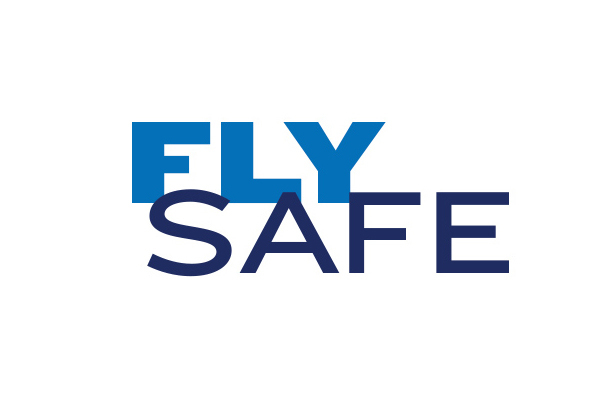   Prevent Loss of Control Events The Federal Aviation Administration (FAA) and the general aviation (GA) community's national #FlySafe campaign is designed to educate GA pilots about the best practices to calculate and predict aircraft performance and to operate within established aircraft limitations. Returning to the Cockpit Has it been a while since you sat in the left seat? This month, we're not only going to encourage you to consider returning to the command position, we're also going to give you resources on how you can do it safely. There are a few "must-do's" on your checklist before you consider taking flight again. The first is an assessment of your personal health and fitness. What could have disqualified you years ago, may now be acceptable with revised guidelines. For more information, please see the Aviation Medical Examiner Guide online. Before you return to the cockpit, you'll need to log a few hours of flight time with an instructor who will take the time to help you re-learn those good habits that you once knew. Be sure to review any segments of flying where you feel a bit rusty, including stalls and steep turns. Finally, you must get up to speed on all the changes that have taken place since you left the cockpit. Be sure to review any regulatory changes, especially those that focus on airspace use. Study up on the Special Flight Rules Areas (SFRA), Flight Restricted Zones (FRZ), and Temporary Flight Restrictions (TFRs). TFRs can occur at any time, so before every flight, check the Notices to Airmen (NOTAMs) and the TFR list online, and call the Flight Service Station for updates. The Sport Pilot/Light-Sport Aircraft Rule, implemented in 2004, allows pilots to operate aircraft that fall within certain reduced weight and speed parameters. Pilots are required to have a valid U.S. driver's license. If you have a private pilot certificate, you can legally fly a light-sport aircraft provided you are current, and the aircraft is in the same category in which you're qualified. Safe Flying is a goal we all share. Please read the additional safety information below. Welcome back!! What is Loss of Control (LOC)?
A LOC accident involves an unintended departure of an aircraft from controlled flight. LOC can happen when the aircraft enters a flight regime that is outside its normal flight envelope and quickly develops into a stall or spin. It can introduce an element of surprise for the pilot. Message from FAA Administrator Michael P. Huerta:
The FAA and industry are working together to prevent Loss of Control (LOC) accidents and save lives. You can help make a difference by joining our #Fly Safe campaign. Every month on FAA.gov, we provide pilots with Loss of Control solutions developed by a team of experts – some of which are already reducing risk. I hope you will join us in this effort and spread the word. Follow #FlySafe on Twitter, Facebook and Instagram. I know that we can reduce these accidents by working together as a community. More about Loss of Control Contributing factors may include: - Poor judgment or aeronautical decision making
- Failure to recognize an aerodynamic stall or spin and execute corrective action
- Intentional failure to comply with regulations
- Failure to maintain airspeed
- Failure to follow procedure
- Pilot inexperience and proficiency
- Use of prohibited or over-the-counter drugs, illegal drugs, or alcohol
Did you know? - In 2016, 413 people died in 219 general aviation accidents.
- Loss of Control was the number one cause of these accidents.
- Loss of Control happens in all phases of flight. It can happen anywhere and at any time.
- There is one fatal accident involving Loss of Control every four days.
Learn more: AOPA has some excellent resources for the returning pilot. Check out Lapsed Pilots and Resuming the Journey for helpful tips. The FAA has its own Safety Bulletin: Flying After a Period of Inactivity. The FAASafety.gov website has Notices, FAAST Blasts, online courses, webinars and more on key general aviation safety topics. Check out GA Safety Enhancements fact sheets on the main FAA Safety Briefing website, including Flight Risk Assessment Tools. The WINGS Pilot Proficiency Program helps pilots build an educational curriculum suitable for their unique flight requirements. It is based on the premise that pilots who maintain currency and proficiency in the basics of flight will enjoy a safer and more stress-free flying experience. The General Aviation Joint Steering Committee (GAJSC) is comprised of government and industry experts who work together to use data to identify risk, pinpoint trends through root cause analysis, and develop safety strategies to reduce the risk of GA accidents. The GAJSC combines the expertise of many key decision makers in the FAA, several government agencies such as the National Aeronautics and Space Administration, and stakeholder groups. Industry participants include the Aircraft Owners and Pilots Association, Experimental Aircraft Association, General Aviation Manufacturers Association, Light Aircraft Manufacturers Association, National Business Aviation Association, National Air Transportation Association, National Association of Flight Instructors, Society of Aviation and Flight Educators, and the aviation insurance industry. The National Transportation Safety Board and the European Aviation Safety Agency participate as observers. |
No comments:
Post a Comment